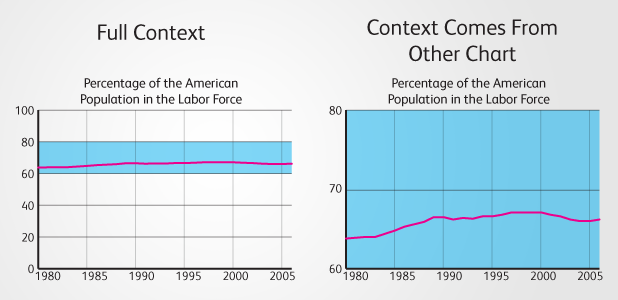The thing about telling stories through data is, sometimes you don’t know what the story is until you’ve visualized the data. And if the story isn’t what you expected, you may have to either: A. tell the “new” story as it is, or B. find another set of data and another story to tell. Unfortunately, sometimes the commissioner of the visualization may ask you to go with option C. tweak the visualization, or even the data, so it shows the story they want to tell. In the past, the team at Visual.ly has been asked to crop axes in order to exaggerate trends in a chart. The argument is that “as long as the axis is labeled correctly, it is okay”. It would be nice if this were true, but it is not. If we are to truly do visualization, then all of the information related to the chart should be visual. Properly labeled axes are always important, but they should never be part of the primary method of interpreting the data from a visualization. Often times, within a chart there are relationships that are shown between the blank spaces. The visual mark itself is not the only place that information is shown. One example of this is in a line chart showing percentages. (Data) 



2024 State of Marketing Report
Your golden ticket to crush your goals with data-driven insights!
2024 State of Marketing Report
Your golden ticket to crush your goals with data-driven insights!






